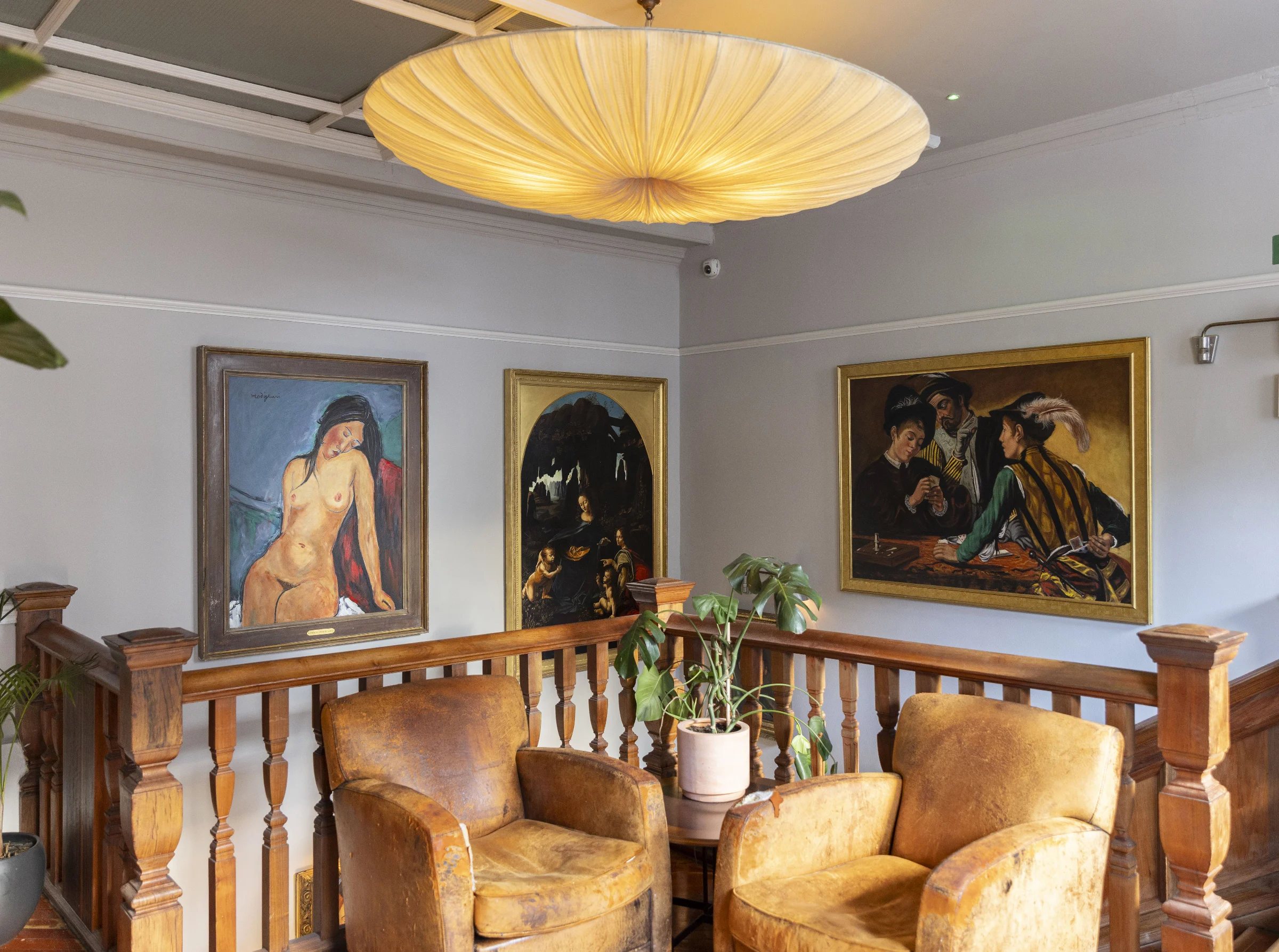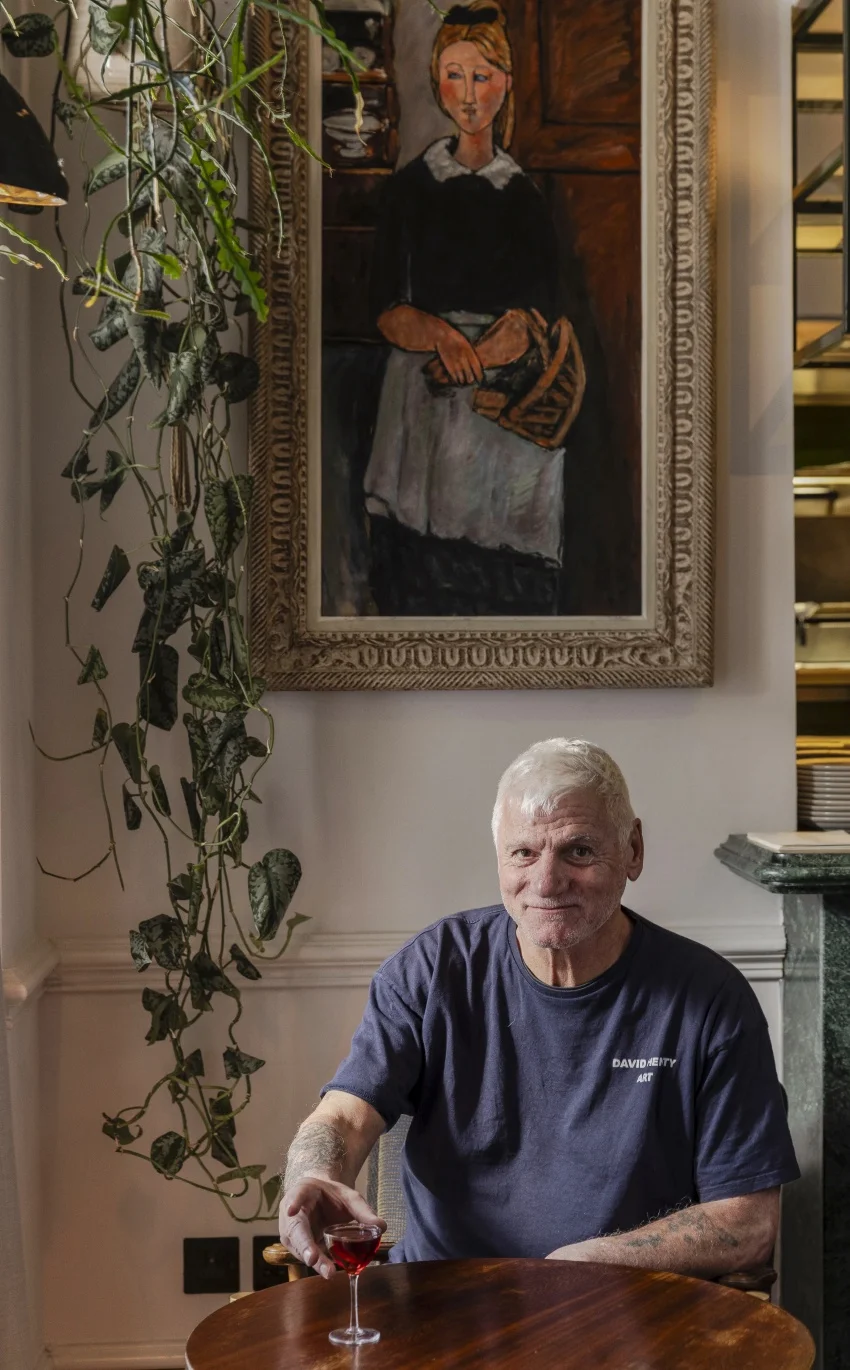The King of Forgery David Henty
Known for his meticulously forged paintings, David Henty has recreated some of the world’s most iconic masterpieces and is considered one of the best copyists in the world today.
Having honed his craft for over 25 years and mastered the techniques and nuances of some of the most renowned artists, his work has fooled scientists and art critics alike, being practically indiscernible from originals of artworks by Amedeo Modigliani, Pablo Picasso, LS Lowry, Caravaggio, Leonardo Da Vinci, Vincent Van Gogh, Norman Rockwell, Chaim Sautine, Carel Fabrituius, Claude Monet, Jean Michel Basquiat, Ewin Landseer, Walter Sickert, Rene Magritte, David Shepherd, John Singer Sargent, Gabriel Rossetti, and the list goes on. His history as an established artist started, appropriately enough, with a short stint in HM Prison for forgery in the mid-1990s. It was while serving the sentence that David honed in on his skills, after being seduced by the stories of the artists he studied.
The Pilgrm is delighted to now be showcasing over 30 of his pieces amongst a number of works from Henty’s personal project; The Righteous Brothers, in collaboration with Jake Fern.
Ahead of his new solo show, we caught up with David:
When and how did your love for art begin?
When I was about eight or nine was had meningitis and had to spend quite awhile in bed. My father had a set of history books richly bound in red velvet, with the most amazing illustrations that brought the stories to life. I particularly liked the Genghis Khan story, the illustrations of Genghis Khan on his horse dressed in traditional Mongolian clothing was magnificent I can still see the image in my mind today. The early British history stories were splendid and the picture of the knights in their armour stood out from the page.
How and where did you learn you forging techniques?
I suppose I started around the time of my meningitis recovery. I spent hours copying the illustrations in the history books. I remember also having a book of William Hogarth etchings and drawing them, the more complicated the easier it seemed for me to copy.
Why forge when you can paint your own/original work?
I started forging by accident really, I was showing my brother Steven (also a talented artist) how to paint a sky – from a painting by Paul Henry that was in an auction catalogue. I later sold the copy of the painting on an online auction for £1000!
Why would someone want to own forged artwork?
Forged art has its own kudos – If a forger has a great back story like Eric Hebborn or Tom Keating It makes the art more interesting and quite often more valuable than the original. There are often other reasons, if someone had a priceless piece of art, they may want to have it in the bank, so want the original copied and the fake on the wall. Or simply as one of my clients put it “Why spend £50million on a Modigliani painting when he can invest that money in his business and have one of mine instead!
Are any of your works in public collections?
I have seen my work in auction house catalogues selling as an original, so yes, they are ‘out there’.
Who’s bought your artwork to-date?
I have many super rich clients, but I also sell many paintings through galleries across the UK.
Have you forged works of any living artists and what did they think?
I have copied the works of living artists, but I prefer dead artists! (They can’t sue!!
Are there artists whose work you can’t forge?
I can only paint artists I have an affinity with, I did paint a Frida Kahlo, but I find it very difficult to get into a women’s mindset.
What’s the most enjoyable work you have produced and why?
They are all (well mostly) enjoyable. I like to paint Caravaggio’s work. I love the lightning strike action style and the drama of his paintings. I am working on a lost Caravaggio now. – It’s a long project.
Who’s your favourite artist and why?
Caravaggio is my favourite. He was the first “punk rocker’ of art the original bad boy. Touched with genius his life is fascinating, a violent man, in violent times but his art changed everything.
Your time “away”; tell us more.
I was innocent!! No, I did five years for forgery – not paintings but passports, I was asked to do the watermarks on the pages. We got caught but the time inside gave me time to reflect and concentrate on painting and honing my craft, I spent most of my time in the art
department.
Your views on the art establishment?
Sometimes when I listen to the ‘experts’ talk about art and it’s meaning I go to sleep! I prefer to step in an artist’s shoes, look through their eyes and create, only then can you really understand their creative process.
How would you and your work like to be remembered?
I don’t really think about that. I prefer to use my time pushing the boundaries of what I can paint, and finding whose style brings the biggest challenges.
The Righteous Brothers, how would you and Jake describe your work?
It’s contemporary art, merging the aesthetics of a pulp fiction cover and combining it with social commentary and political expression. The modern-day version of William Hogarths’ paintings of 18 th Century society and moral subjects.
“Not my Clown” – tell us more.
I liked the Queen, but not sure on King Charles – I think that resonates with most of the general
public.
“Trial by Media” – tell us more.
Russell Brand has been quite outspoken on varies issues and know the media want to silence him before he has even been interviewed by the police or convicted of any charges. Whether one likes him or not, to be convicted of a crime before being charged isn’t right.
How do you hope this (The Righteous Brothers) artwork will resonate with the public?
Artwork should cause a debate/controversy and as well as being aesthetically pleasing on the eye.
Are there specific moments of personal growth or memorable
experiences that have shaped your journey as an artist?
Of course, when you are in ‘the flow’ creating something that works it is quite a spiritual moment, a bit like an outer body experience an enlightenment.
What initially drew you to the art of forging and how did you develop this skill?
I have always been interested in the old masters. I felt I had an affinity with them, that’s the way I taught myself to paint. Lots of trial and errors.
Can you walk us through your process when forging artwork? What are the key elements you focus on to ensure accuracy?
I like to see the artists works where I can. Now I’m working on a Picasso – so trips to galleries which hold Picassos, reading books and watching documentaries about the artist to get into his head space. Generally, I soak myself in the artist until I can paint in their style subconsciously.
Can you share any significant challenges you've encountered while forging art, and how you've overcome them?
Every artist comes with different challenges to overcome. That’s part of the excitement, working out their painting technique.
How does your approach to art forgery fit into your broader artistic philosophy and beliefs?
There has been forgery throughout history, Michelangelo was a forger, It’s nothing new. All artists steal!
Are there specific resources or techniques you find particularly valuable in your ongoing learning process?
I like to buy old books, find out information where I can about the insight of the artists, heresay, old documentaries, stories from people who knew the artist, snippets of information. In one book I read about Modigliani it said he used furniture polish on his paintings – vital knowledge.
Have you ever faced a situation where you had to navigate a difficult ethical dilemma when forging artwork?
No!
Did you find it challenging to separate your own artistic identity from the act of imitation?
No!
Did creating fake works change your perception of originality and genuine artistic expression?
No, all artists steal off each other, we all feed from the stimuli around us.
Looking back, how do you view this period of your artistic journey in the context of your overall legacy as an artist?
I would like to be remembered for bringing art to the masses, making art reasonably affordable.
What are the most significant lessons you've taken away from this experience, both personally and professionally?
I will have to ponder over that one!
Come and see David Henty's pieces now on show throughout the Lounge and Cafe at The Pilgrm. Entry is free - just enjoy a coffee or brunch to be able to sit for a while and soak it all in. Find us at 25 London Street, London W2 1HH.





